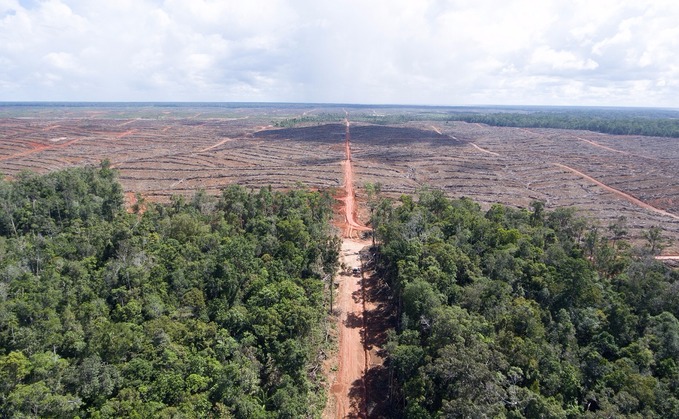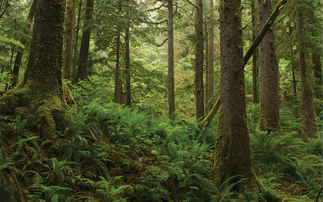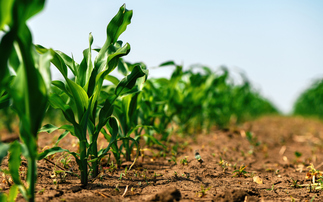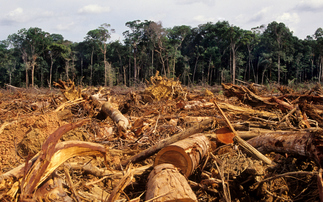
New biome-wide assessment of the mining industry's impact on tropical forests reveals significant deforestation impacts in 18 of 26 countries studied
New peer-reviewed research published in the Proceedings of the National Academy of Sciences (PNAS) has this week revealed how industrial mining activity is driving above average levels of deforestation in many of the world's most important tropical forests.
The study was conducted by overlapping the geographic coordinates of industrial mines in operation from 2000 to 2019 with forest loss data from the Global Forest Change dataset for the same period. The data covered 26 countries representing 76.7 per cent of the total tropical deforestation observed from 2000-2019.
Researchers concluded that industrial mining was both contributing directly to forest loss and leading to "widespread indirect impacts on deforestation" as the roads and infrastructure that accompanies mining activity helps drive further forest clearance. The report revealed how for more than two-thirds of the countries studied higher rates of deforestation that were not connected to other factors were found within 50 kilometres of the areas designated for mines.
"Against the rapidly growing demands for minerals, in particular for metals for renewable energy and e-mobility technologies, government and industry policies must take into account both the direct and indirect impacts of extraction," said Anthony Bebbington, Higgins Professor of Environment and Society at Clark University's Graduate School of Geography and corresponding author for the study. "Addressing these impacts is an important tool for conserving tropical forests and protecting the livelihoods of communities who live in these forests."
Researchers found that tropical deforestation from industrial mining in Brazil, Indonesia, and Ghana - three of the countries most impacted by mining-related deforestation - peaked between 2010 and 2014, but "continues today".
They found that coal mining in Indonesia in particular doubled during this time period as output grew to match increased demand from China and India.
Researchers said the scope of forest destruction in Indonesia "stood out" in the study, especially in East Kalimantan, which researchers found lost 19 per cent of its tree cover over the past two decades. The province, the centre of coal mining for the country, also hosts the construction site of the future national capital Nusantara, a city being built where a timber plantation once stood - and a tropical forest before that.
Out of the 26 countries studied, Indonesia accounted for 58.2 per cent of the tropical deforestation directly caused by international mining activities. But researchers also highlighted Brazil, Ghana, and Suriname as areas of concern in the study. The deforestation from iron ore and gold mining in the Brazilian state of Minas Gerais was "clearly visible" in the satellite data, the researchers said, while bauxite and gold mining were major causes of forest loss in Ghana and Suriname.
The researchers said the study highlighted the need for Environmental Impact Statements and other permitting requirements for industrial mining that include a broader geographic scope that covers more territory outside of the project concession area.
The study advised that applications for new mining projects should also not be examined in isolation and that the cumulative impacts of other projects in a region, such as agricultural developments, should be considered.
"There is a broad range of environmental damage caused by mining operations on top of deforestation, including destruction of ecosystems, loss of biodiversity, disruption of water sources, the production of hazardous waste and pollution," said Stefan Giljum, lead author of the study and associate professor at the Institute for Ecological Economics, Vienna University of Economics and Business.
"Government permitting should take all of this into account; an industrial mine can easily disrupt both landscapes and ecosystems. Industrial mining remains a hidden weakness in their strategies to minimise environmental impacts."
Hariadi Kartodihardjo, PhD, Professor of Forest Policy at Bogor Agricultural University, said the study contained particular lessons for Indonesian policymakers, who have enjoyed some success in recent years in curbing deforestation rates. "Although Indonesia's total deforestation has declined annually since 2015, these findings emphasise the continued need for strong land use planning to ensure mining does not destroy forests or violate community rights," he said.
The report also cited previous research in the Brazilian Amazon that detailed how acknowledging and enforcing the collective property rights of Indigenous Peoples and local communities is one of the most effective ways to combat deforestation, with deforestation in indigenous territories being significantly lower than in places managed by other government or private entities.
The most recent United Nations climate report supported this argument, stating: "Supporting Indigenous self-determination, recognising Indigenous Peoples' rights and supporting Indigenous knowledge-based adaptation are critical to reducing climate change risks and effective adaptation."
The study also stressed that its analysis of mining's impact on tropical deforestation could prove to be an underestimate, as it did not include data on direct deforestation from artisanal and small-scale mining as part of its analysis because standardised global databases with geographic coordinates for such operations do not yet exist in forms that are amenable to statistical analysis.
The authors acknowledged that artisanal and small-scale mining, as well as illicit mining, still generate significant environmental damage that "demands scrutiny, response and remediation".
To date it is the agricultural industry that has faced the most scrutiny from the public and policymakers over its contribution to tropical deforestation. However, the new PNAS study highlights how the mining sector is also a major contributor to unsustainable levels of forest loss that are driving up greenhouse gas emissions and fuelling biodiversity loss. Its conclusions have significant implications for both mining operators and the many businesses, including the growing clean tech sector, that rely on the commodities it produces.







